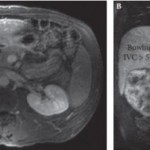RE: Prostate Carcinoma With Positive Margins at Radical Prostatectomy: Role of Tumour Zonal Origin in Biochemical Recurrence
Sir,
With great interest, we read the recent article by O’Neil et al. [1], in which the authors investigated the relation between the tumour zonal origin (transition zone vs peripheral zone), positive surgical margins (PSM) after radical prostatectomy and the risk of biochemical recurrence (BCR). Clinicopathological data for 323 patients with PSM after prostatectomy were analysed, of which tumours arising in the prostate transition zone (TZ) were 13%, while tumours in the peripheral zone (PZ) were 87%. The data showed that the percentage of PSM was higher for TZ compared with PZ tumours, with frequent involvement of the bladder neck margins for TZ tumours, without significant difference in time to BCR. In this cohort of patients, adjuvant radiotherapy (ART) was performed in 41% and 53% of TZ and PZ tumours, respectively. Contrary to expectation, BCR was earlier and at higher rate in patients who underwent radiotherapy for TZ rather than PZ tumours.
In the authors’ opinion, these data represent a selection bias, probably due to the higher incidence of bladder neck positive margins in the ART group. This is a novel finding that warrants further investigation.
As radiation oncologists, we make the following comments:
ART is recommended in patients with adverse pathologic features in order to reduce the risk of BCR, local recurrence and clinical progression [2]. Despite the use of a multimodal approach for radiotherapy planning, approximately 40% of patients experienced BCR long-term with an higher risk of developing metastases or cancer-related death [3,4]. It is plausible that the reasons of local failure may include inadequate radiation dose and target coverage, particularly at the anastomotic site, and this probably represents another bias to be considered as well as patient selection, as suggested by O’Neil and colleagues. To date, four different guidelines for clinical target volume (CTV) delineation in the post-prostatectomy setting are available, although there is little data to guide radiation oncologists on appropriate margins selection [5]. The proposed CTVs differed significantly among these consensus guidelines with respect to target border, especially in anterior and cranial directions. In particular, the European Organization for Research and Treatment of Cancer (EORTC) CTV was smaller in comparison with other consensus volumes, with more limited prostate bed coverage and with less irradiation of surrounding healthy tissue, to reduce radiation therapy side effects[5].
In our opinion, for the majority of cancer patients to be treated effectively, the risk of marginal misses is greater than normal tissue complications, and could affect the clinical outcome; thus, target coverage should generally not be compromised [6]. We would also like to add that small treatment margins may be more sensitive to geometrical uncertainties, including set-up errors and inter- and intra-fraction target motions of the prostate bed, and daily image guidance is required [7]. Finally, we believe that to make definitive recommendations regarding the magnitude of margin reduction with improvement of therapeutic ratio, an accurate selection of patients is required.
Maria Grazia Ruo Redda1 MD, Alessia Reali1 MD, Roberta Verna1 MD, and Simona Allis1 MD.
1Department of Oncology, Radiation Oncology, University of Turin, S. Luigi Gonzaga Hospital, Orbassano, Turin, Italy.
References
- O’Neil LM, Walsh S, Cohen RJ, Lee S. Prostate carcinoma with positive margins at radical prostatectomy: role of tumour zonal origin in biochemical recurrence. BJUI 2015, Jul 27. [Epub ahead of print]
- Thompson IM, Valicenti RK, Albertsen P, et al. Adjuvant and Salvage Radiotherapy after Prostatectomy: AUA/ASTRO Guideline. J Urol 2013;190:441-9.
- Bolla M, van Poppel H, Tombal B, et al. Postoperative radiotherapy after radical prostatectomy for high-risk prostate cancer: long-term results of a randomised controlled trial (EORTC trial 22911). Lancet 2012;380:2018-27.
- Thompson IM, Tangen CM, Paradelo J, et al. Adjuvant radiotherapy for pathological T3N0M0 prostate cancer significantly reduces risk of metastases and improves survival: long term follow-up of arandomized trial. J Urol 2009;181:956–62.
- Malone S, Croke J, Roustan-Delatour N, et al. Postoperative radiotherapy for prostate cancer: a comparison of four consensus guidelines and dosimetric evaluation of 3D-CRT versus tomotherapy IMRT. Int J Radiat Oncol Biol Phys 2012;84:725-32.
- Marks LB, Yorke ED, Jackson A, et al. Use of normal tissue complication probability models in the clinic. Int J Radiat Oncol Biol Phys 2010;76(3):S10-9.
- Gill S, Isiah R, Adams R, et al. Conventional margins not sufficient for post-prostatectomy prostate bed coverage: An analysis of 477 cone-beam computed tomography scans. Radiother Oncol 2014 Feb;110(2):235-9.



